Fujiwara-kyo Capital City Ruins Site: Japan’s First Planned Imperial City
2021/07/31
Both an important historical site and place of scenic natural beauty the Fujiwara-kyo Capital City Palace Ruins site is located between the 3 Mountains of Yamato in Kashihara City, Nara Prefecture. It preserves what was once the center of power in the Fujiwara Capital City, the center of government in Japan from 694 to 710 CE. It is a popular place to visit for both nature and history lovers alike, with seasonal flowers including sakura in the spring, summer lotus, and cosmos in the fall.
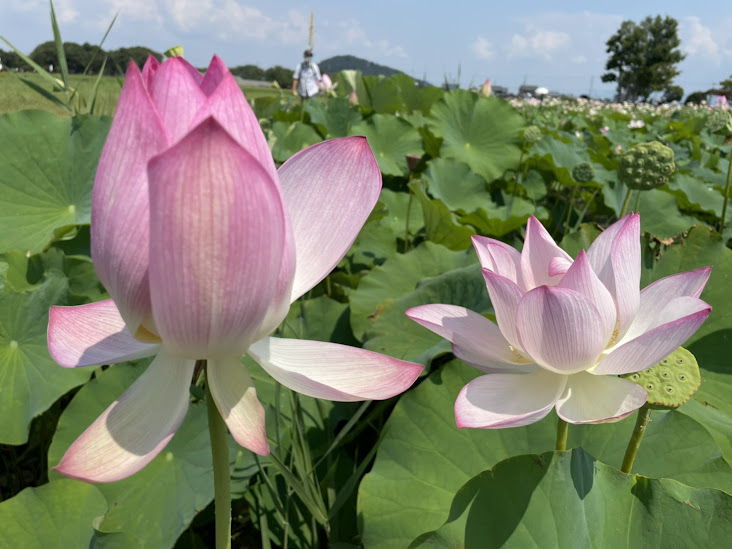
Lotus flowers at Fujiwara-kyo
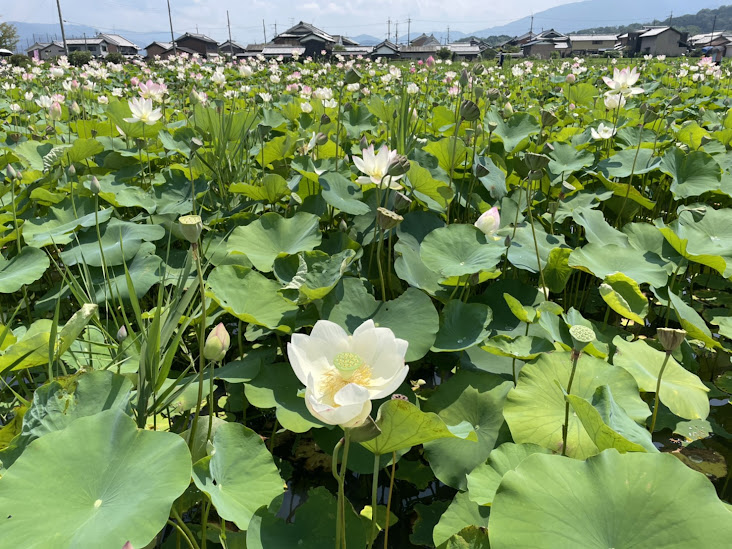
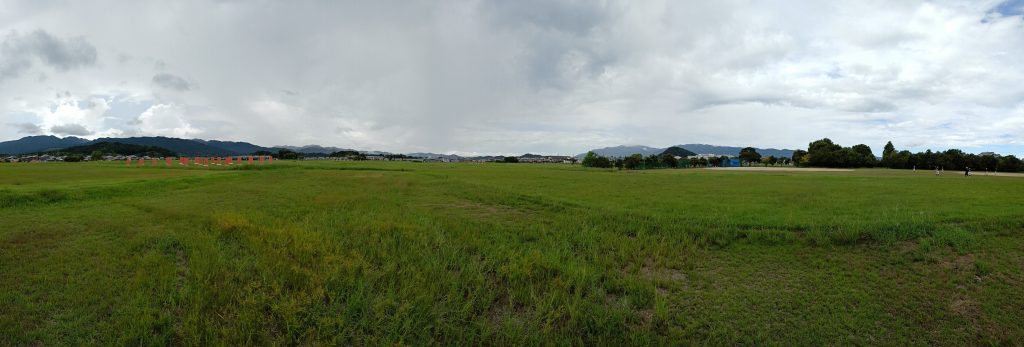
A panoramic shot of the Fujiwara-kyo area looking south. Mt. Amanokagu can be seen on the left and Mt. Unebi on the right.
Historical Relevance of Fujiwara-kyo
The Kashihara area is known as the semi-mythical home of Japan’s Imperial Family through Emperor Jimmu (Japan’s legendary first Emperor) who is said to have established his palace at the base of Mt. Unebi, the tallest of the 3 Mountains of Yamato mentioned above. Interestingly, the earliest writings on the origins of the Imperial Line, the Kojiki and Nihon Shoki (from which we have the story of Emperor Jimmu) also date back to around the same period as the establishment of the Fujiwara Capital City. Furthermore, Emperor Tenmu, who is credited with kickstarting the plans to build the city, is also credited with commissioning the creation of these first collections of semi-historical writings.
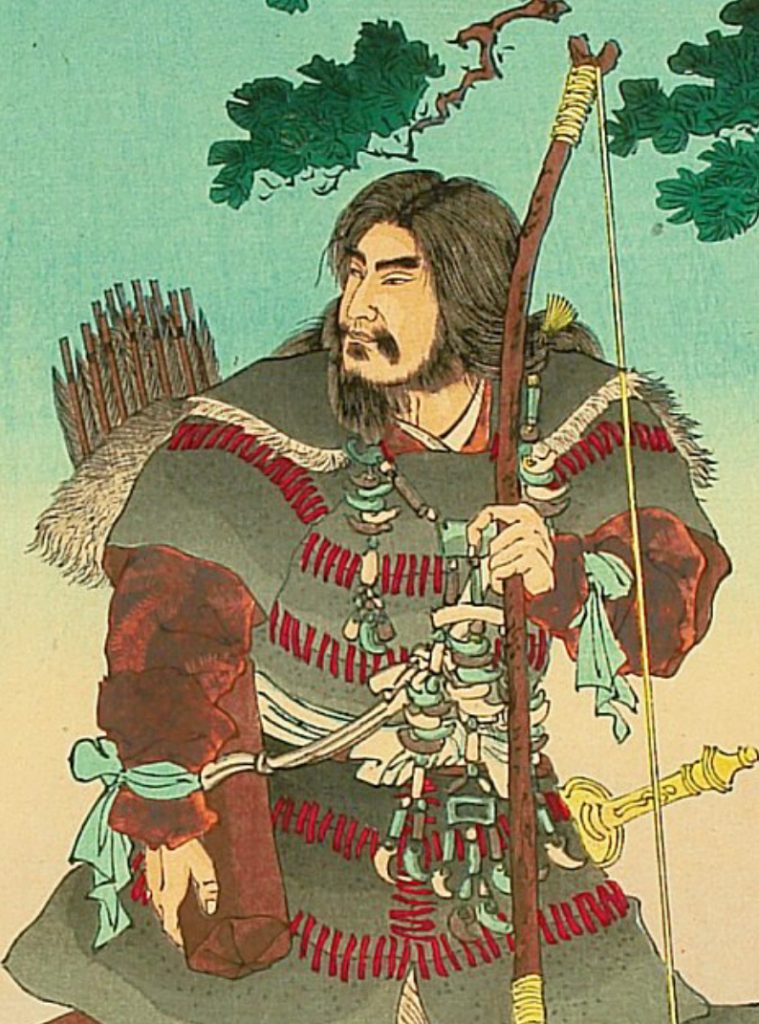
Emperor Jimmu. Legendary Emperor who founded Japan’s Imperial Family in Nara, according to the writings of the Kojiki and Nihon Shoki,
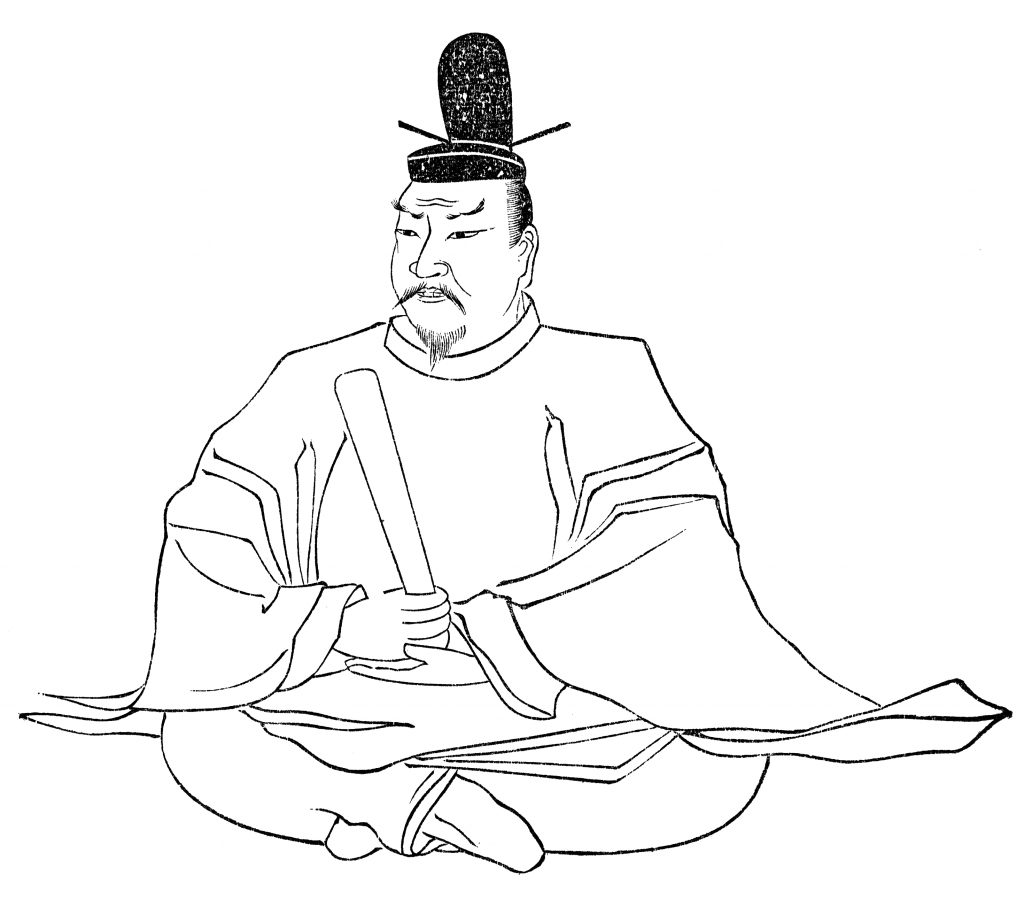
Emperor Tenmu
The Fujiwara Capital City is known as Japan’s first planned Imperial City (modeled after Chinese style Imperial cities) and was quite large, encompassing at least 25 square kilometers in area. The city was built upon a foundational grid of roads, with the center being a walled off palace area from which a regent could rule. Emperor Tenmu, having won his throne through conquest, planned to consolidate and expand the power of the position of Emperor, and one way was through the construction of a new capital, a tradition that actually had existed for generations of emperors before him as is made clear by the abundance of Imperial Palace ruin sites throughout Nara Prefecture alone.
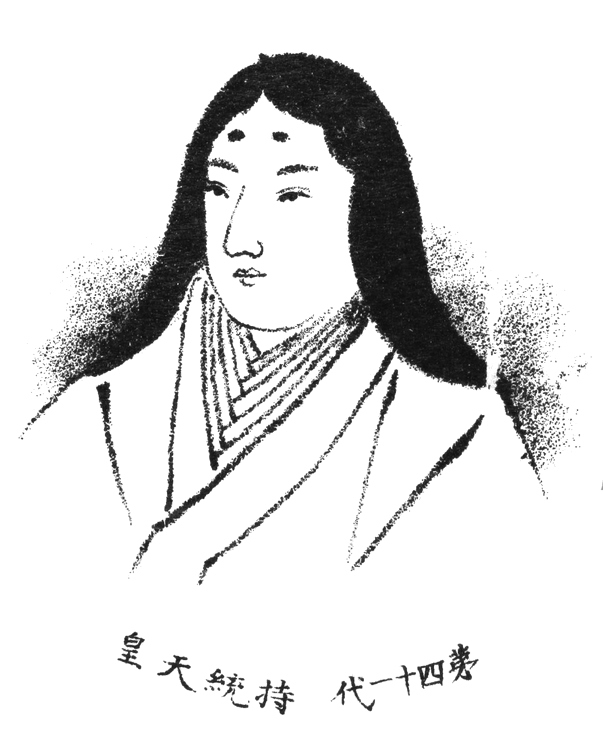
Empress Jito
Tenmu passed away before the city was finished being constructed, but his wife and successor, Empress Jito, saw the project through. Perhaps the most impressive part of the city was the Imperial Palace which was constructed out of materials brought in from all over the country, including a roof made of thousands of clay tiles; the first of its kind for an imperial palace.
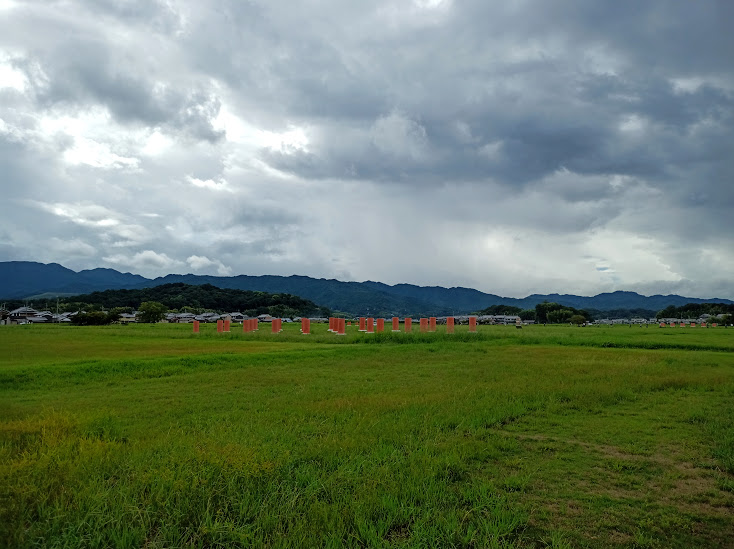
The palace site’s scenic appeal is hard to deny. Mt. Amanokagu, one of the 3 Mountains of Yamato, can be seen in the nearby background to the left.
In modern times, the archeological site of the Central Palace area and Audience Hall (and other ongoing excavation sites) can be observed at the ruins site. The mound on which the Imperial Palace was built can be seen and new red pillars have been reconstructed over where old pillar foundations have been discovered to give visitors an idea of the outline of the buildings in the area. It is also a place of recreation used by members of the surrounding community, with a baseball diamond located at the northwest corner.
Fujiwara-kyo is also well-known for its pleasant scenery and is part of an officially designated “Place of Scenic Beauty” encompassing the 3 Mountains of Yamato. There is certainly an immeasurable value to having a protected location where it is possible to immerse oneself in a historical landscape and connect with shared conceptions of beauty that existed in the minds and hearts of people who were here before us over 1,300 years ago.
Fate of the Capital
In the year 711, 16 years after its completion, the Fujiwara Capital City burned down and was never rebuilt again. Excavations began in the area in the 20th century that discovered remains of the Capital and they are still ongoing to this day. Located just west of the site is the Fujiwara Capital Information Center where you can see a model recreation of what the city used to look like, as well as other historical artifacts from the area.
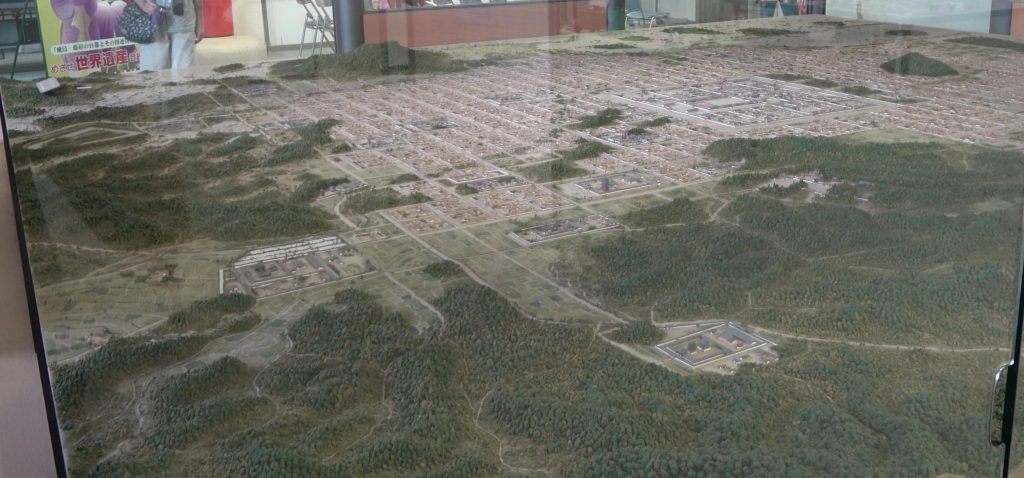
Model recreation of the Fujiwara Capital City found in the Fujiwara Capital Information Center.
Access Info
The Fujiwara-kyo Capital City Ruins site is about a 25 minute bicycle ride away from Kashihara Navi Plaza, next to Yamato-Yagi Station. We recommended our easy to use bicycle rental program at Kashihara Navi Plaza for the most carefree way of accessing Fujiwara-kyo, as well as other nearby attractions throughout the Kashihara City area.

01
FIND YOUR FAVORITE
TRIP ON OUR WEBSITE.
SEND US AN INQUIRY.

02
PERSONALIZE THE TRIP
TO YOUR INTERESTS
WITH OUR CONSULTANT.

03
20% DEPOSIT TO CONFIRM.
BALANCE PRIOR TO ARRIVAL.
PAYMENT BY CC OR TT.

04
WE WILL
MEET YOU
AT THE AIRPORT.

05
DISCOVER THE
TREASURES!